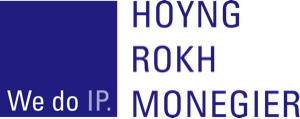1. What is the value gap? – Article17 of the DSM Directive is probably the one that, together with Article 15, has generated the most controversy . It is the result of a compromise between conflicting interests and seeks to remedy what is referred to in the jargon as the “value gap”. The concept refers to a discrepancy between the value resulting from the provision of copyright protected content that is perceived by online content sharing platforms and the revenues that are allocated to the rightsholders concerned. The consequences of such a “gap” are, on the one hand, far too low (or even inexistent) compensation for rightsholders and, on the other hand, a distortion of competition on the market.
Since 2001, we have lived with an old legislative framework that does not integrate the role of certain operators engaging in their business with no remuneration for the authors. Article 17 must therefore be seen as a major step towards restoring the balance between the fundamental rights of authors and the other fundamental rights involved.
2. The end of an uncertainty – As long as there was legal uncertainty as to whether online content sharing platforms engaged in acts covered by copyright and related rights and therefore had to obtain, from the rightsholders, an authorisation to offer copyright protected content that could be downloaded by their users, the rightsholders were not able to determine if (and under which conditions) their works were exploited, as well as their possibilities to obtain an appropriate remuneration . Article 17 of the DSM Directive puts an end to this uncertainty.
3. The platforms concerned – Article 17 targets “online content sharing service providers” which are defined in Article 2.6 of the DSM Directive as providers “of an information society service of which the main or one of the main purposes is to store and give the public access to a large amount of copyright-protected works or other protected subject matter uploaded by its users, which it organises and promotes for profit-making purposes” (hereafter the « Platforms »).
The operators targeted are therefore moneymaking Platforms that rely on the content uploaded by their users and that try to attract the widest possible audience. However, a whole series of operators are excluded from the scope of Article 17 of the DSM Directive, such as not-for-profit online encyclopaedias (for ex. Wikipedia) or cloud services that allow users to upload content for their own use (such as Dropbox) . In line with the principle of proportionality, a more flexible regime is also provided for new operators starting their activities.
4. Authorisation required – According to Article 17, the Platforms perform an act of communication to the public or an act of making available to the public when they give the public access to copyright protected content uploaded by their users. They should therefore obtain an authorisation from the rightsholders concerned.
5. No liability exemption – Except in situations outside of the scope of the DSM Directve , i.e. when it concerns liability unrelated to copyright , the Platforms shall not benefit from the limitation of liability provided for in Article 14(1) of Directive 2000/31/EC.
6. What if no authorisation is granted? Since the Platforms provide access to content that is downloaded by their users, what happens if they do not obtain the required authorisation? Art 17.4 of the DSM Directive holds them liable, unless they demonstrate that they have (i) made best efforts (a) to obtain an authorisation (this is the first plan) and, in the absence of it (b) to ensure the unavailability of unauthorised works (on the basis of the information received by the rightsholders) and (ii) in any case, acted expeditiously, upon notice from the rightsholders, to disable access to, or to remove from, their websites the notified works and made best efforts to prevent their future uploads.
If a rightsholder decides not to grant a license, the Platforms and the rightsholders will have to collaborate in order to prevent access to unauthorised works. While the music industry strives to license their works as much as possible, the audiovisual industry has already made it clear that they will try to push through filtering and blocking.
To determine whether the Platform has complied with its obligations, several elements will be considered such as the type, the audience and the size of the service, the type of works uploaded by the users and the availability of suitable and effective means and their cost for the Platforms.
7. The Internet users – Several safety valves are provided at their level, including the following ones. Firstly, they enjoy greater legal certainty than before because when they make use of the Platforms they will be covered by the agreements concluded between the Platforms and the rightsholders, unless their activities are commercial and generate significant revenues.
Secondly, there is a marked progress at the level of transparency towards users, forcing the Platforms to communicate about their rules and practices regarding cooperation and licensing .
Thirdly, the DSM Directive provides for various possibilities of complaint mechanisms that allow users to make themselves heard when content was – in their view – unduly deleted or disabled. Important to note: a human assessment is planned at this level .
Lastly, the users should logically be able to rely on copyright exceptions such as those relating to citation, criticism, or parody.
8. Stakeholder dialogue – Discussions are currently taking place at the European Commission to discuss best practices for the cooperation between the Platforms and the rightsholders. The outcome of the discussions will feed into the preparation of the guidelines to be prepared by the Commission pursuant to the DMS Directive.
Stéphanie Hermoye
1) Article 13 until the vote of 29 March 2019 – which explains that a large number of comments on this provision refers to the old numbering.
2) It gave rise to strong criticism from defenders of digital freedom and from some giants of the net such as YouTube.
3) http://ipkitten.blogspot.com/2019/02/the-value-gap-proposal-in-latest-fr…
4) Recital 61 of the DSM Directive.
5) Since the DMS Directive does not specify what a “large” amount it, it will be an assessment on a case by case basis taking into account various factors such as the audience of the service and the number of files uploaded/downloaded by the users.
6) See also recital 62 of the DSM Directive.
7) Article 2.6 and recital 62 of the DSM Directive.
8) Article17.6 of the DSM Directive.
9) Article17.3 of the DSM Directive.
10) See: http://ipkitten.blogspot.com/2019/02/the-value-gap-proposal-in-latest-fr…
11) Directive 2000/31/EC of the European Parliament and of the Council of 8 June 2000 on certain legal aspects of information society services, in particular electronic commerce, in the Internal Market, Official Journal L 178 , 17/07/2000, p. 0001-0016.
see http://copyrightblog.kluweriplaw.com/2020/01/13/article-17-stakeholder-d…
12) Article17.5 of the DSM Directive.
13) Article17.2 of the DSM Directive.
14) Article17.8 of the DSM Directive.
15) Article17.9 of the DSM Directive.
16) Article 17.7 of the DSM Directive.
17) For more details, see http://copyrightblog.kluweriplaw.com/2020/01/13/article-17-stakeholder-d… and http://copyrightblog.kluweriplaw.com/2020/01/14/article-17-stakeholder-d…

